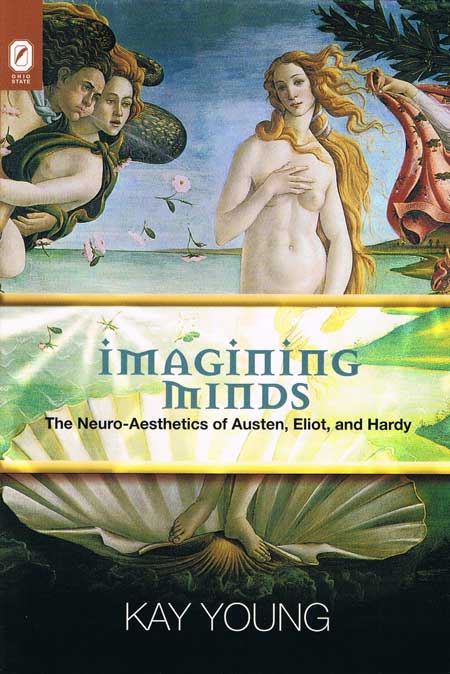|
A Choice Outstanding Academic Title for 2010 Imagining MindsThe Neuro-Aesthetics of Austen, Eliot, and HardyKay YoungTheory and Interpretation of Narrative |
 9/28/2010 Literary Criticism/European/English 218 pp. 6x9  $29.95 paper 978-0-8142-5174-4 Add paper to shopping cart $59.95 cloth 978-0-8142-1139-7 Add cloth to shopping cart $14.95 CD 978-0-8142-9238-9 Add CD to shopping cart Shopping Cart Instructions Review/Change Shopping Cart & Check-out | |||
|
Table of Contents
Explore More The Brain and Creativity Institute Institute of Neuroesthetics: Introduction |
“Imagining Minds is as rigorous as it is insightful. Taken together, her essays reveal the many ways of depicting mind (emotional, embodied, and subjective) even within the same period and national literary tradition, from Austen’s self-conscious narration of the ‘self’s mind’ to Eliot’s struggle with the ‘other’s mind’ to use Hardy’s use of ‘nonintrospective states of mind’.” —Victoriographies “Books that manage to bridge two cultures remain a rare commodity, no doubt because authors who can fill the in-between void are hard to find. Imagining Minds is such a book and Kay Young is such an author; I recommend both without reservation. Kay Young is an original scholar, possessed of a fresh voice. In equal parts, one hears a committed respect for human weakness, a quiet bemusement at human folly, and a celebration of human intellect. She certainly has good reason to celebrate her own intellect, which she has cultivated so carefully that she is as much at home in philosophy of mind and neuroscience as she is in literary analysis. When she says ‘I feel, therefore, I am the mind’s story,’ she speaks for the writers under her microscope—Austen, Eliot, Hardy—and she knows whereof she speaks.” —Antonio Damasio, David Dornsife Professor of Neuroscience, Director, Brain and Creativity Institute, University of Southern California, and author of Descartes’ Error, The Feeling of What Happens, and Looking for Spinoza “This distinguished book centers on original, learned, and perceptive readings of six classic nineteenth-century British novels, two each by Jane Austen, George Eliot, and Thomas Hardy. These novels are read in the context of the most recent twenty-first-century work in cognitive neuroscience. William James and Antonio Damasio are, however, especially important. Kay Young’s theoretical presupposition is that these old novels strikingly foreshadow recent brain science and its discoveries about the interrelations among brains, bodies, consciousnesses, emotions, and the external world, including, especially, other people. Her hypothesis is strikingly confirmed in brilliant detailed readings of the six novels.” —J. Hillis Miller, UCI Distinguished Research Professor of Comparative Literature and English, University of California, Irvine “Kay Young’s Imagining Minds is an excellent book: insightful, timely and distinctive, well-informed, and written in a style that is clear, concise, lively, and engaging. It will be a must-read book for narrative theorists, comparable to Lisa Zunshine’s Why We Read Fiction and Alan Palmer’s Fictional Minds.” —Alison A. Case, professor of English, Williams College Imagining Minds explores how the novels of Austen, Eliot, and Hardy create the felt-quality of their authoring minds and of the minds they author by bringing their writing in relation to cognitive neuroscience accounts of the mind-brain, especially of William James and Antonio Damasio. It is in that relational space between the novels and theories of mind-brain that Kay Young works through her fundamental claim: the novel writes about the nature of mind, narrates it at work, and stimulates us to know deepened experiences of consciousness in its touching of our reading minds. While, in addition to James and Damasio, Young draws on a range of theories of mind-brain generated by current research in philosophy, neuroscience, cognitive science, psychology, psychiatry, and psychoanalysis to help her understand the novel’s imagining of mind, her claim is that those disciplines cannot themselves perform the more fully integrated because embodied and emotionally stimulating mind work of the novel—mind work that prompts us as their readers to better know our own minds.
| |||


 Kay Young
Kay Young